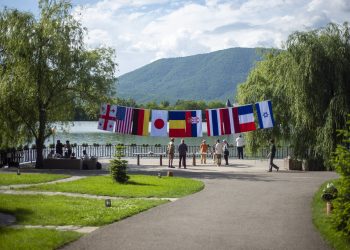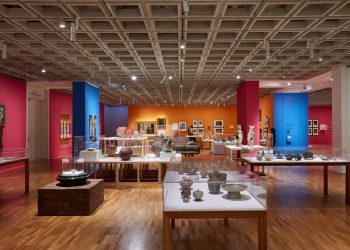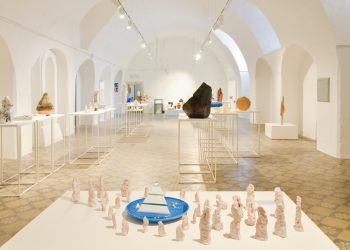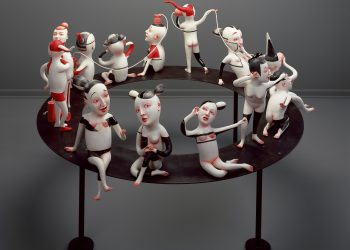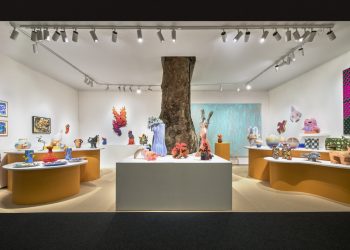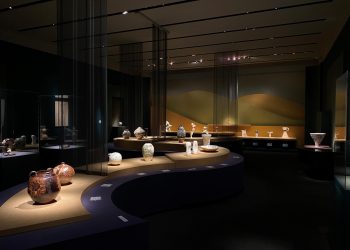
Growing up near the ocean around natural diversity and continuous change, you have developed a finite line of work. Do you visualize your work from the very beginning?
I spend a lot of time sketching and planning. My sketches can be very specific and architectural, or very loose and gestural. But ultimately, I am an intuitive thinker. I rely on feeling and instinct in my artwork. When I sit down with clay, the careful preparation is put aside in favor of the moment. Once I have the clay in my hands, I am often swept away by the possibilities I encounter as the clay begins to express its properties.
Do you remember the first ceramic piece that you created? How did it look like and how do you feel about your evolution as a ceramic artist?
I remember the first piece I created that had an impact on me. It was a little pinch pot, a half sphere and nicely formed. It was so perfect, likely the best I had made to date. I wondered what would happen if I dropped it while it was still malleable. I decided to indulge this impulse, and I let my little pinch pot fall. The perfectly round rim became this very interesting, offset elliptical shape in response to the force of the impact. After it was fired, it retained the mark of that force. It looked plastic, but it was solid.
This experience helped me recognize the approach that I wanted to take with this medium — to enjoy the process and avoid feeling that the work is precious. The visual aspect of the work is compelling to me, but the process is the lure.
When constructing a new piece, you are using different materials such as clay, glass, and glaze. What challenges you the most by combining these materials?
I love the unknown. I love being surprised by the materials, and I love experimenting. Combining clay bodies with different shrink rates, adding glass, or using glaze in an unconventional way are a few of the methods I use when courting disaster or looking for insight. I push the materials toward something that I think will be interesting, but I never really know what will happen. Opening the kiln after a firing can be like meeting the work for the first time.
One of the challenges I encounter when mixing mediums is riding the line between something that doesn’t work and something that does. I enjoy a good bit of failure in my work in this regard. The other challenge is repeatability. I take a lot of notes and process photographs so I can go back and understand exactly what caused a particular, interesting result.
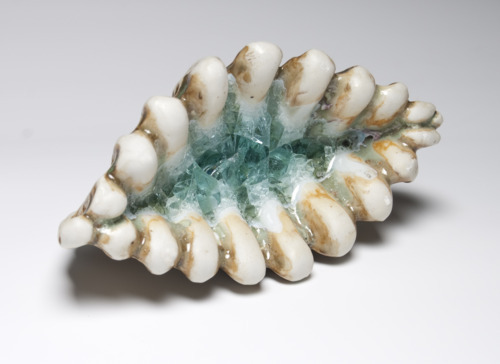
Exopool, 2010. Porcelain, glass and glazes. Multiple firings to cone 10 (reduction atmosphere) and cone 6 (neutral atmosphere). Dimensions 18 x 11 x 15 cm
You have been working since 2005 at the Mudflat Studio, a modern facility for ceramic arts. Tell us about what you learned there and how is the atmosphere between the 30+ ceramic artists working in the same building.
I have learned most of what I know about ceramic technique at Mudflat Studio. I started as a student, joined the technical staff, and I am now a resident artist.
We moved into a new facility in August of last year. Lynn Gervens, the Executive Director, and her husband Richard worked tirelessly during the 10+ years it took to acquire, design and renovate the new facility. The new open-format building is an inspiring place to work, but the people are the real treasure. Everyone is always milling about, checking out what others are making and sharing feedback. It is a welcoming, collaborative atmosphere.
There is a strong volunteer component to Mudflat, too. We all donate our time to help raise funds, run events and participate in everything from general construction to kiln firing. I think this aspect of the studio helps to make it feel like a large, extended family.
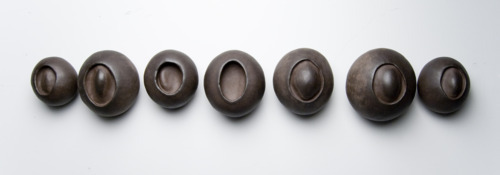
Barnacle, 2011. Dark Stoneware hollow forms fired to cone 6 (neutral atmosphere), wall installation. Dimensions variable, average size per individual piece is approximately 12 x 11 x 8 cm
Recently you’ve been working on wall forms. Tell us about your new project.
I traveled to the Oregon coast last August and spent several days wandering the rocky shores, discovering small pockets of life relying on little splashes of tidal water to survive. It was shocking to imagine living one’s life at the whim of a splash of water. These little creatures had a big impact on me.
Since returning from this trip, I’ve found myself making a multitude of small forms with various clay bodies. Some of these objects remind me of little creatures, others seem like small fossils or bits of shell. They are beginning to line up in jars on my studio shelving like a naturalist’s collection. I like how glass brings life to the clay by attracting light. I am experimenting with the kiln-forged glass, looking for ways to capture even more light by trying new colors, adding bits of porcelain, encouraging cracks and the like. My sketchbook is filling up with larger forms that will pull all of these elements together, but I draw them knowing that new possibilities will emerge when my hands touch the clay.
By Cora Pojaru and Vasi Hîrdo.
Published in Ceramics Now Magazine Issue 2.
View Debra Fleury’s profile on Ceramics Now.
Visit Debra Fleury’s website.




